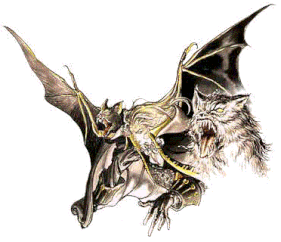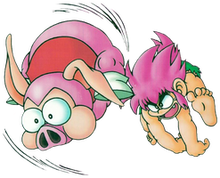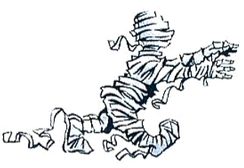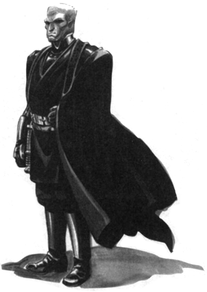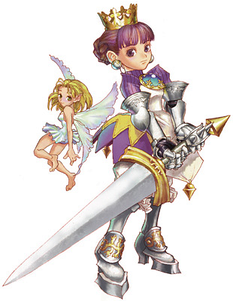1997 (Fallout, Alundra and Final Fantasy VII are released) WIP
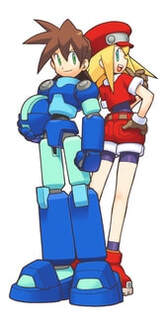
Castlevania: Symphony of the Night (PS1/SAT, 1997/PSP, 2007)
Subgenre: ARPG (exp point leveling system and a few NPCs but no towns - the whole game takes place inside and right next to a huge castle and there's little story progression, one shop)/Igavania
Movement Mechanics: Flight and forward air dash in bat form, dive kick (diagonally downwards - Shinobi 3), slow and limited flight via the mist form which can also be used to dodge some attacks (a bit like The Ninja/Ninja Princess), upwards air dash (similar to Shinespark in SM), sliding as Richter
Playthrough - Video Review - Mini Review
Mega Man Legends (PS1, 1997)
Subgenre: Zelda-like 3D Platformer/TPS/AA (town/overworld hub w/ NPCs and shops, various upgrades to buy and find, side quests)
Perspective: TP view w/ FP view stationary aiming mode
Other: Hub area, Most dungeons are interconnected, Partially mission-based
Playthrough - Video Review - Mini Review
Subgenre: ARPG (exp point leveling system and a few NPCs but no towns - the whole game takes place inside and right next to a huge castle and there's little story progression, one shop)/Igavania
Movement Mechanics: Flight and forward air dash in bat form, dive kick (diagonally downwards - Shinobi 3), slow and limited flight via the mist form which can also be used to dodge some attacks (a bit like The Ninja/Ninja Princess), upwards air dash (similar to Shinespark in SM), sliding as Richter
- Partially non-linear structure
- Good map system (Super Metroid-style)
- Alternate endings
- Frequent save points
- A few teleporters (can also teleport to the shop from anywhere with library cards)
- Unlockable Richter mode (harder and simpler) and Maria mode (Saturn and PSP versions only and it plays differently in each)
- Some sequence breaking possibilities
- Familiars (the fairy familiar will tell you about breakable walls when standing next to them) - similar to Wonder Boy in Monster World
Playthrough - Video Review - Mini Review
Mega Man Legends (PS1, 1997)
Subgenre: Zelda-like 3D Platformer/TPS/AA (town/overworld hub w/ NPCs and shops, various upgrades to buy and find, side quests)
Perspective: TP view w/ FP view stationary aiming mode
Other: Hub area, Most dungeons are interconnected, Partially mission-based
- Mostly linear structure (you can sometimes choose between two dungeons but you're guided towards the "right" one and picking the other one is kind of redundant since the game doesn't let you explore it fully at that point, you'll gain new abilities over the course of the game (such as a drill and high jump) which let you explore previous areas fully for optional upgrades)
- Save points (outside of dungeons and missions)
- Auto-mapper dungeon map with mini-map feature (very zoomed in mini-map though and the map doesn't show chests nor dungeon sub area names or floors, you also can't switch between visited dungeon sub areas on the map screen, can't put markers on the map) and town/island overworld map without (this latter map is also kinda vague as it doesn't show your exact location nor most of the buildings)
- Quick travel with the support car/van (can be called from anywhere except dungeons and the big airship, only to a few locations at first but more are added as you visit them after getting the walkie-talkie)
- No sequence breaking w/o glitches
Playthrough - Video Review - Mini Review
Tomba!/Tombi! (PS1, 1997)
Subgenre: 2.5D* ARPG/Action Adventure-ish (NPCs, quest/mission-based within an interconnected world, experience system of sorts (ability bars that unlock the use of three optional magic gems, very interactive side view environments), Collectathon (lots of fetch quests, roughly half of the 130 quests are obligatory?, you're usually kept from progressing until you collect a bunch of items and complete one or more fetch quests in each area, sometimes you're locked out of sub areas because they're "very dangerous" which really means the same thing)
Perspective: Side View/Top Down View (towns) Hybrid
Other: *Double plane gameplay in most areas and you can rotate the view 45 degrees in some areas
Playthrough - Video Review - Mini Review
Subgenre: 2.5D* ARPG/Action Adventure-ish (NPCs, quest/mission-based within an interconnected world, experience system of sorts (ability bars that unlock the use of three optional magic gems, very interactive side view environments), Collectathon (lots of fetch quests, roughly half of the 130 quests are obligatory?, you're usually kept from progressing until you collect a bunch of items and complete one or more fetch quests in each area, sometimes you're locked out of sub areas because they're "very dangerous" which really means the same thing)
Perspective: Side View/Top Down View (towns) Hybrid
Other: *Double plane gameplay in most areas and you can rotate the view 45 degrees in some areas
- Mostly linear structure (mostly linear main path in terms of the areas, can beat the wind or fire pig bosses first and then beat the rest of the bosses in any order (besides the final boss), some quests can be done out of order in the late game, the sheer amount of quests picked up as you’re finishing other quests makes the game feel less linear)
- Teleport items (the one-use wings let you go back to any previously visited area and the bells take you back to the old mens' rooms) - there's also a recruitable flying dog later on which has the same function as the wings and can be used freely
- Basic quest log (doesn't help much for the most part though as the descriptions tend to be short and vague)
- Can check the world map at any point (unusual in that it's fairly zoomed in on the current area and vaguely shows its paths as well as most save points and path crossings, can move the cursor around and check area names for any visited areas, the map doesn't show where locked chests or quest givers are though)
- Frequent save points (15 slots per card, shows current location and some stats) - can restore your health by reloading a save or visiting one of the elders or the bird bath
- No area maps like in Super Metroid for example
- Some puzzles and platforming puzzles
- Can escape from boss battles
- Extra lives system which is a bit redundant in a game with frequent save points
- Partial control config (only the face buttons can be remapped)
- Several chests are placed in mundane spots without a platforming/exploration/puzzle/combat challenge leading to them
Playthrough - Video Review - Mini Review
Mystical Ninja Starring Goemon (N64, 1997)
Subgenre: 3D Zelda-like w/ manual jumping and more straightforward design (fewer tools+puzzles and more action-focused bosses)
Perspective: TP view
Movement Mechanics: Underwater swimming in mermaid form as Yae
Other: 1-player only
Playthrough - Video Review - Mini Review
Subgenre: 3D Zelda-like w/ manual jumping and more straightforward design (fewer tools+puzzles and more action-focused bosses)
Perspective: TP view
Movement Mechanics: Underwater swimming in mermaid form as Yae
Other: 1-player only
- Decent map system (semi-transparent mini-map of the current sub area in towns and overworlds but not in dungeons; no full overview map of towns/the overworld while there is one you can find for dungeons and overworld/journey areas (however it doesn't show your avatar's exact location), no proper signs outside town houses - some have untranslated japanese ones)
- Mostly linear structure (some backtracking to explore further into previous areas with persistent abilities gained along the way)
- Four different playable characters that you can switch between on the fly once recruited (they control mostly the same but only Ebisumaru and Sasuke can attack upwards (only while crawling as Ebisumaru though) and each one has a different set of weapons and a unique spell, each one also has a special move or tool, shared HP and gear for all chars)
- Teleport to visited towns with the flute (Ys, Zelda 1 sort of) but not outside of dungeons
- Save points (inns and outside dungeons, before giant robot bosses, one slot per game) and a few health restoration points (hot baths)
- Mixes in other gameplay styles (auto-scrolling large robot/impact bomber level - shallow and trial & error heavy, large robot FP view boss duels - pretty good)
- Extra lives system (9 max) which is a bit redundant in a game with frequent save points
- A few mini-games (stealth (avoid being seen when taking the sweets in the golden temple, crane game - similar to Link's Awakening, whack-a-mole variant (muscle training), mashing mini-game to get the mermaid form) - decent overall but generally one time only
- Overworld areas are more realistic in shape and size but this leads to tons of dead space (can't run very quickly)
- Some sequence breaking possible (hover jump via throwing instead of using the chain pipe, damage boosts, more with glitches)
- No quest log/journal feature
Playthrough - Video Review - Mini Review
Dr. Franken II (GB, 1997)
Subgenre: Collectathon (4 tablet pieces, 10 coins and various key style items)
Other: Hub area outside the castle
Playthrough - Review - Mini Review
Lands of Lore II/Lands of Lore: Guardians of Destiny (PC, 1997) - WIP
3D-ish ARPG/AA (2D and FMV elements; use-based stat progression however equipment has more of an effect, crafting, moral decisions, some friendly NPCs)
Perspective: FP view
Movement Mechanics: Jumping and swimming
Other: A binary morality system binary affects which of seven different endings you'll get, Auto-aiming system for spells, Can't swim
Optional areas
Some tools/spells for traversal/exploration (lizard form (go into small spaces, run fast, stronger magic/weaker physical attacks+can't use items), beast form can push boulders and has a strong physical attack but can't use items nor magic, invisibility, torches and fire spell to light them, blind, hologram, )
Box stacking puzzles
Auto-map
Save anywhere+timed auto-saves
At some predetermined points the morphing is randomized and at some points there are arbitrary triggers that make you go back to human form (can lead to death)
Stats are restored to full when morphing
Context sensitive melee/ranged weapon system if you have one of each equipped
GA2/Dungeon Keeper-style spell charge system (hold button down for stronger spell)
Can die from old age from time spells at one point
Dragon mount for fast travel (cutscene?) at one point (or you can use a shortcut)
Some serious bugs
Star Trek: Generations (PC) - WIP
Subgenre: 3D FPS w/ Space Combat segments (can run away from these), Mission-based
Perspective: FP View
Other: Jumping and some platforming, Hub map (galaxy map that lets you zoom in on solar systems, need to track down the villain and time passes when scanning for him - take too much time and you lose solar systems), Voice messages during missions w/ subtitles
Non-linear structure?
Minor tool gating w/ gained tools (in one mission you use found drones to open doors for you - influence their movement by placing a certain item in the right spots to stop them and then repogram them with it) - no movement abilities gained
Can't save during a mission - only at the beginning
Return to some previous areas for later missions if you managed to complete the earlier missions there
No control config and odd key mappings
"Not only does the plot unfold and continue on in different ways depending whether you fail a mission or not, but there also choices that you must make during actual away missions, and they also effect your progress throughout the game. The designers really excelled in having multiple ways of getting to a common goal, and splitting the plot into a few possible outcomes. Of course, the final word comes down to whether you prevented more than 1 solar system from being destroyed, but the many courses you can set to complete your mission is what makes Generations stand out from other adventure titles."
Some interesting gear (tricorder - sensor that detects lifeforms/energy readings/material structures+maps your surroundings+monitors health of starfleet personnel on away missions, communicator - for contacting the enterprise while on a mission for tips and info+lock onto a crew member to beam them back to ship, rebreather for air-less environments)
Some inventory/P&C-style puzzles
Some breakable walls (use a melee attack)
The Elder Scrolls: Battlespire (PC, 1997) - WIP
Subgenre: 3D ARPG (6 races, simplified daggerfall class system, dialogue trees - can talk to enemies)
Perspective: FP view
Movement Mechanics: Jumping
Initially level-based and linear (maze levels) but opens up further in
Some traversal/exploration skills and spells (invisibility, chameleon, slow fall, confusion?, water breathing)
Teleport spell
2D map
Save feature?
Dark Earth (PC, 1997)? - WIP
Subgenre: 3D-ish ARPG-lite (3D models, pre-rendered backgrounds, multiple fixed camera angles)
Perspective: TP View
Eventual transformation based on moral choices (light/dark slider in the HUD) - Unique abilities?
Resource management
Weapon endurance
Save points
OnEscapee (AMI, 1997/PC, 2004) - Another World/Flashback-like, Linear structure?
Evil clone fight (MM1)
Lego Island (PC, 1997)
Subgenre: Action Adventure/Racing hybrid
Perspective: FP view
Other: Hub area (the island), Five different playable chars (choose at the beginning - only one char can access the whole island via the story), Racing and other mini-games
Partially non-linear
Can build some vehicles later on (flight via the helicopter)
Save feature?
Map feature?
No ability gating besides the vehicles?, No char upgrades?
Comical tone
Pax Corpus (PC/PS1, 1997)? - TP Action Adventure, Mission-based, Linear?
Save in-between missions only (passwords on PS1!)
No maps?
Gameplay - Video Review - Mini Review
Men in Black: The Game (PC, 1997/PS1, 1998) - TP Action Adventure?, Fixed camera angles (mostly TD), Some platforming
Save anywhere?
No maps?
Playthrough - Video Review - Mini Review
Goosebumps: Attack of the Mutant (PC)? - FP View, Some platforming
Linear w/ some backtracking to previous areas?
Save anywhere?
No maps or mini-maps?
Playthrough - Video Review - Mini Review
Sorcerian Forever (PC) - ARPG, Remake, Partial translation
Last Imperial Prince (PC-FX, 1997)? - ARPG, SV, Ys 3-like?
Subgenre: Collectathon (4 tablet pieces, 10 coins and various key style items)
Other: Hub area outside the castle
- Portable teleporter item (can be dropped and teleported to later like the beacon in Exile (AMI/C64)) - potentially removes most backtracking
- Some other tool items although they're used automatically by the game while the player is given a clue to what happened (so basically like keys) - the rest are key style items, Oxygen is a power up collected only in the underwater area to survive there, No movement abilities gained
- Same basic map feature - this one's easier to navigate without the map overall though, Named rooms (can be toggled on/off along with sfx and music using a machine early on in-game)
- Some NPCs with fetch quests
- The game shows your completion percentage in the menu
- Starts off linear but then gradually opens up
- Password save (doesn't save a dropped transporter's location, can be accessed at any point, can also load the last position you saved at - one slot per game)
- Some unkillable enemies early on and not being able to heal until later adds to the sense of vulnerability and so does the oxygen mechanic and lack of attack underwater (oxygen tanks are placed in this area)
- Most items are placed kind of haphazardly without a platform/puzzle/combat challenge leading up to them
Playthrough - Review - Mini Review
Lands of Lore II/Lands of Lore: Guardians of Destiny (PC, 1997) - WIP
3D-ish ARPG/AA (2D and FMV elements; use-based stat progression however equipment has more of an effect, crafting, moral decisions, some friendly NPCs)
Perspective: FP view
Movement Mechanics: Jumping and swimming
Other: A binary morality system binary affects which of seven different endings you'll get, Auto-aiming system for spells, Can't swim
Optional areas
Some tools/spells for traversal/exploration (lizard form (go into small spaces, run fast, stronger magic/weaker physical attacks+can't use items), beast form can push boulders and has a strong physical attack but can't use items nor magic, invisibility, torches and fire spell to light them, blind, hologram, )
Box stacking puzzles
Auto-map
Save anywhere+timed auto-saves
At some predetermined points the morphing is randomized and at some points there are arbitrary triggers that make you go back to human form (can lead to death)
Stats are restored to full when morphing
Context sensitive melee/ranged weapon system if you have one of each equipped
GA2/Dungeon Keeper-style spell charge system (hold button down for stronger spell)
Can die from old age from time spells at one point
Dragon mount for fast travel (cutscene?) at one point (or you can use a shortcut)
Some serious bugs
Star Trek: Generations (PC) - WIP
Subgenre: 3D FPS w/ Space Combat segments (can run away from these), Mission-based
Perspective: FP View
Other: Jumping and some platforming, Hub map (galaxy map that lets you zoom in on solar systems, need to track down the villain and time passes when scanning for him - take too much time and you lose solar systems), Voice messages during missions w/ subtitles
Non-linear structure?
Minor tool gating w/ gained tools (in one mission you use found drones to open doors for you - influence their movement by placing a certain item in the right spots to stop them and then repogram them with it) - no movement abilities gained
Can't save during a mission - only at the beginning
Return to some previous areas for later missions if you managed to complete the earlier missions there
No control config and odd key mappings
"Not only does the plot unfold and continue on in different ways depending whether you fail a mission or not, but there also choices that you must make during actual away missions, and they also effect your progress throughout the game. The designers really excelled in having multiple ways of getting to a common goal, and splitting the plot into a few possible outcomes. Of course, the final word comes down to whether you prevented more than 1 solar system from being destroyed, but the many courses you can set to complete your mission is what makes Generations stand out from other adventure titles."
Some interesting gear (tricorder - sensor that detects lifeforms/energy readings/material structures+maps your surroundings+monitors health of starfleet personnel on away missions, communicator - for contacting the enterprise while on a mission for tips and info+lock onto a crew member to beam them back to ship, rebreather for air-less environments)
Some inventory/P&C-style puzzles
Some breakable walls (use a melee attack)
The Elder Scrolls: Battlespire (PC, 1997) - WIP
Subgenre: 3D ARPG (6 races, simplified daggerfall class system, dialogue trees - can talk to enemies)
Perspective: FP view
Movement Mechanics: Jumping
Initially level-based and linear (maze levels) but opens up further in
Some traversal/exploration skills and spells (invisibility, chameleon, slow fall, confusion?, water breathing)
Teleport spell
2D map
Save feature?
Dark Earth (PC, 1997)? - WIP
Subgenre: 3D-ish ARPG-lite (3D models, pre-rendered backgrounds, multiple fixed camera angles)
Perspective: TP View
Eventual transformation based on moral choices (light/dark slider in the HUD) - Unique abilities?
Resource management
Weapon endurance
Save points
OnEscapee (AMI, 1997/PC, 2004) - Another World/Flashback-like, Linear structure?
Evil clone fight (MM1)
Lego Island (PC, 1997)
Subgenre: Action Adventure/Racing hybrid
Perspective: FP view
Other: Hub area (the island), Five different playable chars (choose at the beginning - only one char can access the whole island via the story), Racing and other mini-games
Partially non-linear
Can build some vehicles later on (flight via the helicopter)
Save feature?
Map feature?
No ability gating besides the vehicles?, No char upgrades?
Comical tone
Pax Corpus (PC/PS1, 1997)? - TP Action Adventure, Mission-based, Linear?
Save in-between missions only (passwords on PS1!)
No maps?
Gameplay - Video Review - Mini Review
Men in Black: The Game (PC, 1997/PS1, 1998) - TP Action Adventure?, Fixed camera angles (mostly TD), Some platforming
Save anywhere?
No maps?
Playthrough - Video Review - Mini Review
Goosebumps: Attack of the Mutant (PC)? - FP View, Some platforming
Linear w/ some backtracking to previous areas?
Save anywhere?
No maps or mini-maps?
Playthrough - Video Review - Mini Review
Sorcerian Forever (PC) - ARPG, Remake, Partial translation
Last Imperial Prince (PC-FX, 1997)? - ARPG, SV, Ys 3-like?
Outliers:
Star Wars: Jedi Knight: Dark Forces II (PC, 1997) - 3D TPS/FPS/Platformer hybrid (you can switch between view modes on the fly), Maze Shooter w/ some RPG elements (meaning it's level-based)
Wireframe map that fills in as you explore (2D top down view, like Doom except this one doesn't have a separate screen) plus additional 3D map in the menu (rotatable and zoomable)
Some alternate paths through levels
Persistent item and weapon inventory (Strife)
Many secrets (finding all secrets in a level gives you one more point to put into force powers) and small semi-hidden detours for items
Quicksave anywhere (but no quickload, many nameable save slots)
Choose between a light side or a dark side path ~2/3 into the game (affects the ending and later force powers, killing NPCs will gradually move you towards the dark path (except for a friendly droid in lvl 4 which takes a lot of hits to kill and will trigger the dark side path if you do it)
Jedi force powers (some of which affect how you can traverse a level) and a basic skill tree system for them (unlock powers and points to put into them as you beat levels - can save points for later)
Resource management is pretty important (limited ammo for every gun, you'll quickly run out of ammo if you only use the rapid fire guns)
One escape sequence (kind of confusing layout for the level but there are two different solutions as you can use force speed+force jump to get to the other side if you took the wrong path at first)
Levels feel more like actual places overall without sacrificing gameplay (in general - sometimes gameplay takes precedence and the level feels pretty arcade-like)
Lets you ambush some enemies (enemies tend not to react to any noise but laser fire so stealth is basic)
Playthrough - Mini Review
Turok: Dinosaur Hunter (N64/PC, 1997) - FPS/FP AA, Hub area w/ large maze levels (first level leads to a small ruins area with teleporters to each level/sub area), Climbing and swimming, Collectathon element (have to find 2-3 keys for each of the 8 levels as well as 8 pieces for a weapon to take out the final boss with - the boss might be doable without it but it's a lot harder)
Partially non-linear after the first level - can unlock up to 2 sub areas at a time by finding keys until the last couple of levels
2D automapper (toggleable overlay, sub area maps aren't persistent - moving between them via teleporters in a level makes them disappear which can be disorienting and means you'll have to rediscover a sub area if you missed a key in it, some paths also remain unmapped after finding them, can't see stairs on the map, can't zoom out the map - pretty zoomed in on N64)
One persistent tool (grenade launcher) that lets you explore new parts of visited areas/levels but it's optional and there is only one place to use it in (level 2 caves)
Can replay beaten levels (most things seem to stay as you've left them besides the maps)
Somewhat rare save points (multiple slots, shows only which level you're currently on), Frequent checkpoints
Hidden bonus levels (find portals and enter them quickly since they disappear after 5-10 secs; these play like the main game but focus on platforming - falling doesn't kill but hazards do, can exit at any point via their entrances, can find cheat codes in them)
Some resource management (limited ammo for all ranged weapons, limited ammo capacity - can be upgraded if you find the backpack)
Frequently respawning enemies in some parts of levels
Extra lives system (collect 100 tokens or find them in the levels, fairly easy to rack up lives)
Levels sometimes wrap around and make you return to an earlier sub area where the next gate leading forward has been opened
Many hidden paths and items (decent-pretty good (levels 5-7) spatial awareness puzzles)
Some neutral creatures/animals - shoot for HP
Playthrough - Mini Review
Hexen II (PC)? - FP View, 4-Player Co-op
Teleporters and teleporter item
Temporary exploration/traversal items: Torch, invisibility, invulnerability?, flight
Water breathing ring
The Paladin "flies" underwater
The Assassin can become invisible while still in shadowy areas
Save anywhere?
Some resource management
No maps
Some platforming puzzles
Difficulty options
Quake II (PC, 1997/Multi) - FPS, Online MP
Some hub levels/areas and finishing objectives in some levels opens up new paths in previous ones
Linear?
Some secret levels via alternate exits
No ability gating
Princess Crown (SAT, 1997/PSP, 2005) - ARPG/Hack 'n Slash, Hub map (shown partially when exiting an area)
Translation in progress
Jumping but no platforming besides a minecart racing mini-game
Basic dungeon maps
Three short post-game chapters with alternate playable characters (the girl can fly (limited) instead of jump)
Let's Play - Video Review - Mini Review
Falcom Classics I (SAT) - Dragon Slayer, Xanadu/Dragon Slayer II: Xanadu (based on Revival Xanadu) & Ys I remakes
Oddworld: Abe's Odyssey (PS1/PC, 1997) - Level-based Puzzle Platformer w/ Maze levels, PoP-style controls
Basic maps (shows level layouts with room exits and mudokons to rescue)
Can posses certain enemies to control them and use their abilities
Umihara Kawase Shun (PS1, 1997) - Puzzle Platformer, Non-linear structure (alternate level exits)
More of the same but with new levels and music
Nightmare Creatures (PC/PS1)? - TP View, Linear?
Mission: Impossible (N64, 1997/PS1, 1999) - TP View, Mission-based?
Broken Helix (PS1)? - TPS?
Tales of Destiny (PS1) - JRPG w/ side view battles
Bomberman 64 (N64) - 3D, Near TD view (high angle, limited camera movement - 8 rotation angles and can't be tilted on the x-plane/vertically, two zoom levels), World select (linear progression between levels in worlds though) and maze levels
No new tools/abilities gained that let you reach new areas in previous levels or progress in new areas
No jumping but can bounce on bombs to move between platforms
Armored Core (PS1) - 3D Mech-based TPS w/ in-depth customization (9 parts+2-4 weapons+optional upgrades), Mission-based, Some maze areas (and some missions tie into previously visited areas), Shop (in-between missions)
Partially non-linear structure (choose between 2-4 missions to do in any order until the late game, what you choose affects your path as some missions are missable, one optional boss/rival mech, some hidden items, can abort/fail a mission and keep going)
Unlock all missions including missed ones after beating the game
Save between missions
No ability gating besides a soft one for the booster and legs parts in the final mission
Resource and weight management
3D maps, Radar
Can't revisit mission areas/replay beaten missions nor hang around after the objective is finished to pick up hidden parts (some mission areas actually connect to previous areas but I don't think you can use this to collect hidden parts). However you can replay all missions+play the ones you've missed after beating the game once (load your last save)
Playthrough - Mini-Review
Crash Bandicoot 2 (PS1) - Hub world/rooms (there's also a hidden one which has levels that connect back to some of the regular levels), Collectathon (25 crystals to access the final boss (easy), 42 gems to see the good ending)
No permanent tools/abilities gained
Can exit a level at any time
Non-persistent item collecting progression until 100%-ing a level besides the crystals (the masks (extra HP) do carry over between levels)
Some points of no return in levels and you still can't flip the camera around when moving backwards in one
Playthrough - Mini-Review
Nanatsu Kaze no Shima Monogatari (SAT, 1997) - Quest Adventure/Platformer hybrid
-No ability gating?
Star Wars: Jedi Knight: Dark Forces II (PC, 1997) - 3D TPS/FPS/Platformer hybrid (you can switch between view modes on the fly), Maze Shooter w/ some RPG elements (meaning it's level-based)
Wireframe map that fills in as you explore (2D top down view, like Doom except this one doesn't have a separate screen) plus additional 3D map in the menu (rotatable and zoomable)
Some alternate paths through levels
Persistent item and weapon inventory (Strife)
Many secrets (finding all secrets in a level gives you one more point to put into force powers) and small semi-hidden detours for items
Quicksave anywhere (but no quickload, many nameable save slots)
Choose between a light side or a dark side path ~2/3 into the game (affects the ending and later force powers, killing NPCs will gradually move you towards the dark path (except for a friendly droid in lvl 4 which takes a lot of hits to kill and will trigger the dark side path if you do it)
Jedi force powers (some of which affect how you can traverse a level) and a basic skill tree system for them (unlock powers and points to put into them as you beat levels - can save points for later)
Resource management is pretty important (limited ammo for every gun, you'll quickly run out of ammo if you only use the rapid fire guns)
One escape sequence (kind of confusing layout for the level but there are two different solutions as you can use force speed+force jump to get to the other side if you took the wrong path at first)
Levels feel more like actual places overall without sacrificing gameplay (in general - sometimes gameplay takes precedence and the level feels pretty arcade-like)
Lets you ambush some enemies (enemies tend not to react to any noise but laser fire so stealth is basic)
Playthrough - Mini Review
Turok: Dinosaur Hunter (N64/PC, 1997) - FPS/FP AA, Hub area w/ large maze levels (first level leads to a small ruins area with teleporters to each level/sub area), Climbing and swimming, Collectathon element (have to find 2-3 keys for each of the 8 levels as well as 8 pieces for a weapon to take out the final boss with - the boss might be doable without it but it's a lot harder)
Partially non-linear after the first level - can unlock up to 2 sub areas at a time by finding keys until the last couple of levels
2D automapper (toggleable overlay, sub area maps aren't persistent - moving between them via teleporters in a level makes them disappear which can be disorienting and means you'll have to rediscover a sub area if you missed a key in it, some paths also remain unmapped after finding them, can't see stairs on the map, can't zoom out the map - pretty zoomed in on N64)
One persistent tool (grenade launcher) that lets you explore new parts of visited areas/levels but it's optional and there is only one place to use it in (level 2 caves)
Can replay beaten levels (most things seem to stay as you've left them besides the maps)
Somewhat rare save points (multiple slots, shows only which level you're currently on), Frequent checkpoints
Hidden bonus levels (find portals and enter them quickly since they disappear after 5-10 secs; these play like the main game but focus on platforming - falling doesn't kill but hazards do, can exit at any point via their entrances, can find cheat codes in them)
Some resource management (limited ammo for all ranged weapons, limited ammo capacity - can be upgraded if you find the backpack)
Frequently respawning enemies in some parts of levels
Extra lives system (collect 100 tokens or find them in the levels, fairly easy to rack up lives)
Levels sometimes wrap around and make you return to an earlier sub area where the next gate leading forward has been opened
Many hidden paths and items (decent-pretty good (levels 5-7) spatial awareness puzzles)
Some neutral creatures/animals - shoot for HP
Playthrough - Mini Review
Hexen II (PC)? - FP View, 4-Player Co-op
Teleporters and teleporter item
Temporary exploration/traversal items: Torch, invisibility, invulnerability?, flight
Water breathing ring
The Paladin "flies" underwater
The Assassin can become invisible while still in shadowy areas
Save anywhere?
Some resource management
No maps
Some platforming puzzles
Difficulty options
Quake II (PC, 1997/Multi) - FPS, Online MP
Some hub levels/areas and finishing objectives in some levels opens up new paths in previous ones
Linear?
Some secret levels via alternate exits
No ability gating
Princess Crown (SAT, 1997/PSP, 2005) - ARPG/Hack 'n Slash, Hub map (shown partially when exiting an area)
Translation in progress
Jumping but no platforming besides a minecart racing mini-game
Basic dungeon maps
Three short post-game chapters with alternate playable characters (the girl can fly (limited) instead of jump)
Let's Play - Video Review - Mini Review
Falcom Classics I (SAT) - Dragon Slayer, Xanadu/Dragon Slayer II: Xanadu (based on Revival Xanadu) & Ys I remakes
Oddworld: Abe's Odyssey (PS1/PC, 1997) - Level-based Puzzle Platformer w/ Maze levels, PoP-style controls
Basic maps (shows level layouts with room exits and mudokons to rescue)
Can posses certain enemies to control them and use their abilities
Umihara Kawase Shun (PS1, 1997) - Puzzle Platformer, Non-linear structure (alternate level exits)
More of the same but with new levels and music
Nightmare Creatures (PC/PS1)? - TP View, Linear?
Mission: Impossible (N64, 1997/PS1, 1999) - TP View, Mission-based?
Broken Helix (PS1)? - TPS?
Tales of Destiny (PS1) - JRPG w/ side view battles
Bomberman 64 (N64) - 3D, Near TD view (high angle, limited camera movement - 8 rotation angles and can't be tilted on the x-plane/vertically, two zoom levels), World select (linear progression between levels in worlds though) and maze levels
No new tools/abilities gained that let you reach new areas in previous levels or progress in new areas
No jumping but can bounce on bombs to move between platforms
Armored Core (PS1) - 3D Mech-based TPS w/ in-depth customization (9 parts+2-4 weapons+optional upgrades), Mission-based, Some maze areas (and some missions tie into previously visited areas), Shop (in-between missions)
Partially non-linear structure (choose between 2-4 missions to do in any order until the late game, what you choose affects your path as some missions are missable, one optional boss/rival mech, some hidden items, can abort/fail a mission and keep going)
Unlock all missions including missed ones after beating the game
Save between missions
No ability gating besides a soft one for the booster and legs parts in the final mission
Resource and weight management
3D maps, Radar
Can't revisit mission areas/replay beaten missions nor hang around after the objective is finished to pick up hidden parts (some mission areas actually connect to previous areas but I don't think you can use this to collect hidden parts). However you can replay all missions+play the ones you've missed after beating the game once (load your last save)
Playthrough - Mini-Review
Crash Bandicoot 2 (PS1) - Hub world/rooms (there's also a hidden one which has levels that connect back to some of the regular levels), Collectathon (25 crystals to access the final boss (easy), 42 gems to see the good ending)
No permanent tools/abilities gained
Can exit a level at any time
Non-persistent item collecting progression until 100%-ing a level besides the crystals (the masks (extra HP) do carry over between levels)
Some points of no return in levels and you still can't flip the camera around when moving backwards in one
Playthrough - Mini-Review
Nanatsu Kaze no Shima Monogatari (SAT, 1997) - Quest Adventure/Platformer hybrid
-No ability gating?
